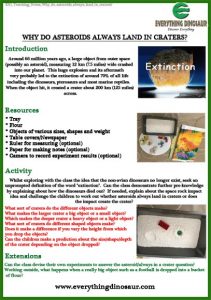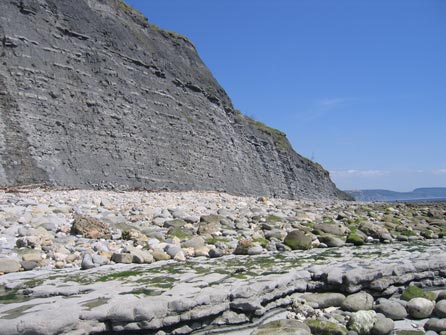Dinosaurs and Extinction Providing Helpful Information and a Free Lesson Plan
How and Why Did the Dinosaurs Go Extinct?
Teachers and learning support providers undertaking a term topic or science week with dinosaurs as the subject matter are going to have to explore the concept of extinction. Most people are aware that the dinosaurs died out approximately sixty-five million years ago. During our dinosaur workshops with primary school children we get asked a lot about the extinction of the dinosaurs. Indeed, Key Stage 1 and Key Stage 2 children are keen to demonstrate their knowledge by telling us how they think the dinosaurs died out. For children at Key Stage 3 and beyond, evolution and genetics now make up a component of the science curriculum.
Answering Questions about Dinosaur Extinction
The Everything Dinosaur team members try to answer all the questions they get asked during their school visits to talk about fossils and prehistoric animals. Sometimes we can build into our lesson plan an investigation to deal with a specific enquiry. In this way we can demonstrate to the children (and to their teachers for that matter), the concept of scientific working.
We also follow up any extension work and send out further information, fact sheets and activity ideas to help the teachers and their support staff. Taking dinosaurs into a school gets the children enthused, motivated and excited and they enjoy exploring the ideas and theories behind the extinction of the dinosaurs as a result.
The Late Cretaceous Extinction (Demise of the Dinosauria) – Dinosaur Extinction Lesson Plan
Picture credit: Everything Dinosaur
How and Why Did the Dinosaurs go Extinct?
With the new curriculum (September 2014), children are being encouraged to work scientifically and to develop an appropriate knowledge of scientific principles and methodology. To assist teachers with the inevitable question that will be asked – “How and why did the dinosaurs die out?” our dedicated team of dinosaur experts have posted up an article on the Everything Dinosaur main blog that provides a teaching guide to answering this question and challenges the pupils to think like scientists and to explore theories.
To view the weblog article: Providing Information for Schools on the Extinction of the Dinosaurs.
The blog article sets out the background to the mass extinction event that took place at the end of the Cretaceous, explains the scale of the extinction and discusses the types of animals that died out. The two main theories which scientists have proposed are explored and the evidence for each is examined.
- Death from Outer Space (asteroid or comet impact)
- Global Climate Change
Dinosaur Extinction
Other ideas and theories are briefly discussed and the article guides teachers and learning support providers through the main topic areas and suggests questions that the teaching team might want to explore with the class. The aim of this article is provide a teaching resource on the Cretaceous extinction event, helping school children to explore scientific methods and work scientifically. The students have the opportunity to weigh up the evidence and decide which theory best fits the evidence.
Your Turn to be a Scientist! What do you Think Happened?
Triceratops One of the Last of the Non-Avian Dinosaurs
Picture credit: Everything Dinosaur
The dinosaur experts at Everything Dinosaur have utilised some of the topic areas covered in a typical dinosaur themed workshop by providing the information that lets the students weigh up the evidence. This article is just one of hundreds to be found on the company’s award winning blog site, providing free resources and teaching support materials to educationalists.
Visit Everything Dinosaur’s website: Visit Everything Dinosaur.






